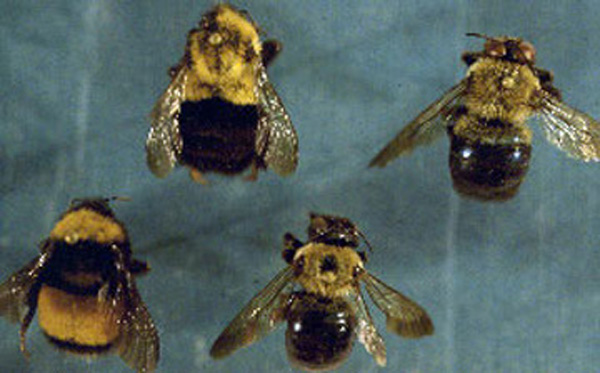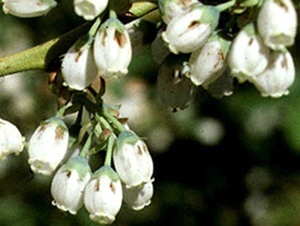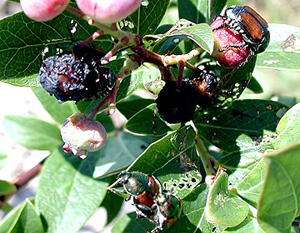Carpenter Bees
Flowers may be physically injured by insects such as Carpenter Bees. Carpenter Bees resemble Bumble Bees, but are smaller and darker.

Carpenter bees chew holes in the sides of flowers.

These holes allow honey bees and other insects to steal nectar through the holes without pollinating blossoms.

Japanese Beetles
Japanese beetle adults also feed on the skin of berries, causing physical damage to fruit:

More Japanese beetle information.
Use these resources if you need additional help with diagnosis and to find solutions to your problem.


